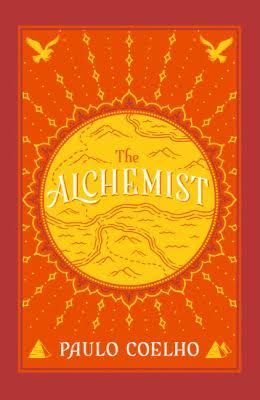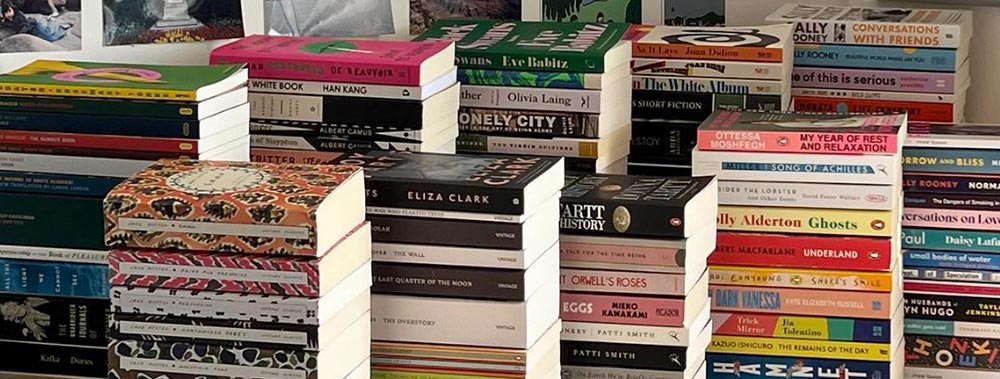The Alchemist: Summary, Plot, Characters, Literary Analysis & More
“The Alchemist” is a novel by Brazilian author Paulo Coelho, first published in 1988. This mystical story follows Santiago, a young Andalusian shepherd boy, who embarks on an extraordinary journey to uncover his personal legend and hidden treasures near the Egyptian pyramids.
Guided by recurring dreams and encounters, including a meeting with the genuine alchemist, Melchizedek, Santiago learns valuable life lessons that lead him through the Spanish countryside and the Sahara Desert. This magical fable, resonating with themes of destiny, self-discovery, and the soul of the world, is a testament to Coelho’s brilliance.
Santiago’s resolute pursuit of his dreams, despite desert conflicts and setbacks, makes “The Alchemist” an enduring masterpiece. Now, let’s see what is The Alchemist, Paulo Coelho all about.
The Alchemist Summary
Paulo Coelho’s masterpiece, “The Alchemist,” resonates with themes of dreams, destiny, and self-discovery. Santiago, a young Andalusian shepherd boy, embarks on a transformative journey guided by a recurring dream.
Along the way, Santiago meets Fatima, an oasis girl, and encounters an abandoned church. Paulo Coelho’s masterpiece tells Santiago’s tale, showcasing the treasure hidden within his heart.
Paulo Coelho’s novel beautifully weaves together elements like dreams, personal legend, and profound encounters. It stands as a timeless testament to Coelho’s artistry and the human pursuit of purpose.

"The Alchemist," resonates with themes of dreams, destiny, and self-discovery. It stands as a timeless testament to Coelho's artistry and the human pursuit of purpose.
Table of Contents
Summary The Plot Characters Key Themes Genres Language used Literary devices Summing upThe Plot
In “The Alchemist” by Paulo Coelho, Santiago falls asleep, experiencing a recurring dream that tells him about a treasure near the Egyptian pyramids.
Santiago’s vision reverberates as Melchizedek, a mystical figure, introduces Santiago to his personal legend, setting him on a transformative journey of self-discovery and destiny.
Characters
The key characters and protagonists in the book include:
Santiago
- The protagonist of “The Alchemist,” Santiago is an Andalusian shepherd boy who embarks on a journey of self-discovery and personal legend.
- He falls asleep under a sycamore tree and experiences a recurring dream that guides him to his destiny.
Melchizedek
- A mystical figure and king of Salem who introduces Santiago to the concept of a personal legend.
- Plays a significant role in guiding Santiago on his journey of self-discovery.
Fatima
- An oasis girl whom Santiago meets on his journey.
- Their relationship is an integral part of Santiago’s journey and growth.
Fortune Teller
- Provides Santiago with a crucial insight into his destiny through a recurring dream.
- Sets Santiago on his path to seek hidden treasure.
Other Characters
- Various characters contribute to Santiago’s journey, including the desert tribespeople, individuals Santiago encounters during his travels, and those who help him along the way.
- Each character plays a role in shaping Santiago’s understanding of his personal legend and his connection to the world around him.
Key Themes
The book explores themes of destiny and self-discovery.
Santiago’s journey, guided by a recurring dream that tells Santiago about hidden treasure, portrays the significance of following one’s personal legend.
Santiago waits for signs, and his vision reverberates, leading him to realize the transformative power of pursuing one’s dreams.
Genres in The Alchemist
“The Alchemist” is a multi-genre masterpiece, encompassing adventure, allegory, and philosophical exploration. Melchizedek introduces Santiago to personal legends, igniting his transformative journey.
Santiago’s interpretation of signs, from his own dreams to waking life, sways his path. This amalgamation of genres enriches the narrative, as Santiago’s experiences reverberate with readers through compelling storytelling.
Language used in The Alchemist
Paulo Coelho’s writing in “The Alchemist” is atmospheric and emotionally charged. Santiago’s own dream and waking experiences are vividly described. The language conveys his journey as he interprets signs, explains his aspirations, and how Santiago grapples with decisions.
Coelho’s words sway Santiago’s path, capturing his interactions, like meeting Melchizedek and encountering Arab soldiers. This skilful language paints an immersive landscape of Santiago’s transformation.
Literary devices in The Alchemist
This book skillfully employs literary devices to weave Santiago’s profound journey. As Santiago wakes to his destiny, the narrative begins, swaying him through dreams and interpretations.
Santiago arrives, encounters Arab soldiers, and explains his desires, while the mysterious King Melchizedek convinces him of his path. There Santiago begins to listen and starts discovering the Soul of the World.
Coelho’s artistry is evident as Santiago’s dreams take shape and a child imparts wisdom. This masterpiece showcases Coelho’s prowess in storytelling and character development, leaving an indelible mark on readers.
Similes
In “The Alchemist,” similes contribute to the reader’s engagement as Santiago’s journey unfolds. As Santiago reverberates throughout the book and his visions change, his experiences are compared to echoes that linger, deepening the understanding of his transformation.
This simile invites readers to resonate with his path, forging a powerful connection to his profound quest. But will that sway Santiago from his pursuit? You will have to read to find out.
Metaphors
Metaphors in “The Alchemist” enrich its themes and characters. Santiago explains his journey as a tapestry woven with personal legend threads. Santiago interprets the omens and that becomes a lens through which to perceive life’s messages.
Santiago’s dream takes on metaphorical weight, symbolizing his quest for treasure beyond material wealth. The encounters with Arab soldiers capture the conflict between fear and destiny.
As Santiago decides, his path becomes a metaphoric map, while a child’s advice acts as a compass. The gypsy woman that Santiago sees embodies the enigmatic aspects of the journey.
Analogies
Analogies within the text serve to illuminate complex ideas. Just as buried treasure symbolizes hidden potential, Santiago’s journey represents self-discovery.
Arab soldiers’ capture (a tribe of Arab soldiers captures them) reflects internal struggles, mirroring Santiago’s challenges. A child’s wisdom (the child tells Santiago that if he visits the pyramids, he will find a buried treasure) imparts profound insights.
Santiago experiences setbacks, akin to navigating the native Spanish countryside, to illustrate life’s hurdles. Santiago’s money analogy signifies the value of experiences in life’s currency.
Imagery
Paulo Coelho employs vivid imagery, immersing readers in sensory experiences in “The Alchemist.” From the desert oasis where Santiago meets Fatima to the growth of the sycamore tree, imagery enhances the reader’s connection to the narrative.
Symbolism
This novel weaves intricate symbolism, connecting elements like Santiago’s first dream and the growth of the sycamore tree to his journey. These symbolic elements deepen themes of personal growth and destiny.
Santiago’s first dream of finding treasure near the Egyptian pyramids is a symbol that resolutely underscores his unconventional love story with the desert. A young man’s dream is a powerful thing.
This symbolism, akin to a translated book review, takes Santiago on a journey where the growth of the sycamore tree parallels the growth of his dreams and the conflicts of warring desert tribes impede his path to discover where his dreams may ultimately lead.
Personification
Personification breathes life into “The Alchemist.” The desert oasis and sycamore tree become active participants, influencing Santiago’s journey. Coelho’s personification of these elements adds depth to the story’s characters and setting.
Hyperbole
In “The Alchemist,” hyperbole is skillfully employed. Santiago’s dream means more than gold as his resolutely unconventional love story unfolds. The sycamore tree’s growth reaches cosmic proportions, mirroring Santiago’s expansive aspirations.
Hyperbolic phrases, reminiscent of a Brazilian novelist’s flourish, amplify the transformative power of Santiago’s journey, enhancing its emotional impact.
Irony
This novel employs situational irony as Santiago’s quest to find treasure is a metaphorical treasure hunt, where the act of searching becomes invaluable.
Verbal irony emerges when Santiago begins digging, only to realize that the true riches lie not beneath the soil, but within his pursuit of a personal legend. This irony deepens the narrative’s theme of self-discovery.
Juxtaposition
In “The Alchemist,” juxtaposition emphasizes contrasts, sparking thought. Santiago’s ordinary beginnings as a shepherd versus his extraordinary quest highlight the transformative power of personal legends.
The juxtaposition of mundane desert settings against Santiago’s vivid dreams creates a thought-provoking atmosphere, underscoring the boundary between reality and aspirations.
Paradox
Santiago’s journey by this amazing Brazilian novelist is marked by paradoxes. His act of turning lead into gold symbolizes how life’s setbacks can lead to growth. Santiago’s giving mirrors the paradox of receiving invaluable insights.
The desert conflict impedes, yet it leads to Santiago’s inner exploration. Such paradoxes, like a Brazilian novelist’s twist, deepen the book’s themes of transformation and discovery.
Allusion
The story contains allusions to historical and spiritual concepts, such as the personal legend akin to myths, and Santiago’s journey resonating with Biblical quests. These allusions deepen the story’s resonance, linking Santiago’s path to timeless human quests for purpose and fulfillment.
Allegory
“The Alchemist” is an allegorical work, with Santiago’s journey symbolizing the broader themes of self-discovery, destiny, and the pursuit of dreams. The narrative’s layers invite readers to reflect on their own life paths and the deeper meanings behind their choices.
Ekphrasis
Within “The Alchemist,” ekphrasis describes the sycamore tree’s growth like a masterpiece painted across time. This vivid depiction, akin to a revered “Alchemist review,” magnifies the tree’s symbolism as it mirrors Santiago’s transformation, enhancing the story’s visual and emotional impact.
Onomatopoeia
In “The Alchemist,” onomatopoeic words immerse readers in auditory sensations. As the sycamore tree grows, its branches rustle with life, echoing Santiago’s transformation.
When Santiago gave coins, their clinking added dimension. These auditory elements heighten readers’ sensory experiences, enriching the narrative’s atmosphere.
Puns
While puns aren’t central in “The Alchemist,” the phrase “turn lead” plays with both the alchemical concept of transmutation and the idea of navigating life’s challenges. This clever wordplay encapsulates Santiago’s journey, highlighting the transformation of difficulties into personal growth.
Repetition
Here, repetition reinforces key themes. Santiago’s journey echoes personal legend, illustrating his growth. The repetition of signs and omens underscores his transformative quest. This linguistic device amplifies the emotional impact and emphasizes the book’s guiding motifs.
The Use of Dialogue
Through dialogue, character traits, themes, and tension are conveyed seamlessly. As characters discuss whether to visit Spain or where to place Santiago, the conversations unveil aspirations and resolutions. Dialogue becomes a conduit for readers to explore the characters’ motives and feelings.
Word Play
Wordplay, including puns and double entendre, enriches “The Alchemist.” The phrase “turn lead” embodies Santiago’s transformational journey, a quest for inner alchemy. Such linguistic play deepens layers of meaning, inviting readers to explore the narrative’s complexities.
Parallelism
Throughout “The Alchemist,” parallelism enhances narrative structure. Santiago’s longing to explore distant lands mirrors his internal journey to “place Santiago” within himself.
Likewise, his pursuit of buried treasure aligns with his quest for hidden personal legend. This mirrored construction reinforces themes of self-discovery and destiny, offering readers a cohesive and resonant reading experience.
Parallelism, seen in Santiago’s external and internal quests, reinforces the power of destiny, guiding readers to embrace their personal legends.
Rhetorical Devices
“The Alchemist” employs rhetorical devices to persuade readers.
Through rhetorical questions, like “Can dreams lead to treasures?” Coelho prompts introspection, compelling readers to contemplate life’s purpose.
The Alchemist: FAQs
In this section, we answer frequently asked questions relating to this book.
Is there a movie The Alchemist?
No. The book has been highly popular but we don’t have a movie yet.
Is “11 Minutes” by Paulo Coelho just as good as The Alchemist?
“11 Minutes” offers a different thematic exploration than “The Alchemist,” delving into themes of love and sexuality. While both are compelling in their own right, they cater to distinct interests. Comparing them depends on personal preferences for themes and storytelling.
Other Notable Works by Paulo Coelho
If you are interested in The Alchemist you might want to check out these as well :
- “The Pilgrimage”
- “Brida”
- “The Valkyries”
- “By the River Piedra I Sat Down and Wept”
- “Veronika Decides to Die”
- “The Devil and Miss Prym”
- “Eleven Minutes”
- “The Zahir”
- “The Witch of Portobello”
- “Brida”
- “Adultery”
- “The Spy”
- “Hippie”
- “The Winner Stands Alone”
- “Like the Flowing River”
Summing up: The Alchemist: Summary, Plot & More
If you’ve read this “The Alchemist” summary, you’ll know that Paulo Coelho beautifully unfolds Santiago’s journey of self-discovery and destiny. Through vibrant imagery, rich symbolism, and thought-provoking allegory, the narrative navigates his growth, encounters, and introspection.
Rhetorical devices and clever wordplay infuse depth, enhancing the story’s resonance. Ultimately, the book’s portrayal of transformative quests holds a timeless allure, making it a captivating and universally relatable read.







